Restaurant specializing in tamago kake men (TKM), raw egg over noodles, opens in central Tokyo
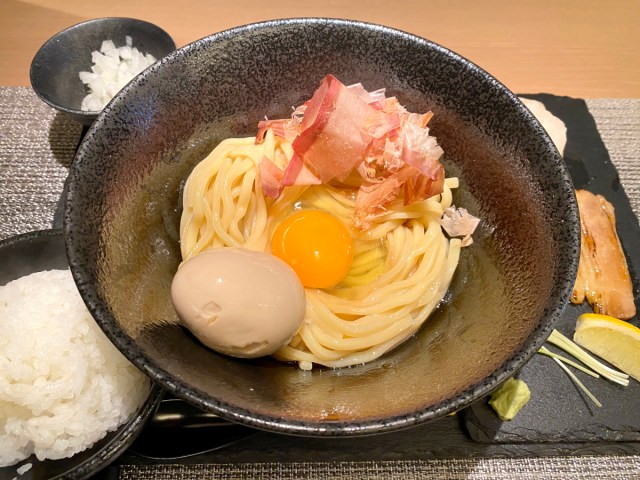
Does this lesser-known noodle variant of the quick-and-easy tamago kake gohan (TKG) have what it takes to become the next big thing?
One of the most enduringly popular breakfast dishes in Japan is called tamago kake gohan (egg over rice), or TKG in slang. Raw egg (which is considered safe to eat in Japan) is mixed into rice and supplemented with a dash of soy sauce and other seasonings. It’s a simple but yummy meal and easy to make in a time crunch.
This month, a new restaurant specializing in a variation of the dish using noodles instead of rice has opened in Tokyo’s central Jimbocho neighborhood. Fujii, as the restaurant is called, is only a one-minute walk from Jimbocho Station, which makes it very easy to access. Of course, our Japanese-language reporter and noodle aficionado P.K. Sanjun had to go and see for himself what tamago kake men, or TKM, was all about. It would be his first time eating it.
▼ The exterior of Fujii

On the day of his visit, P.K. ordered the Deluxe Pork TKM dish for 1,200 yen (US$8) (for reference, the regular TKM costs 950 yen). He could order a small, medium, or large portion of noodles for the same price, and he choose the medium size. It was interesting that the meal also came with a small bowl of rice. He sat at the shiny-new counter and waited only a few minutes until his food arrived. The server instructed him to mix everything in the main bowl together before anything else and then add any desired seasonings.
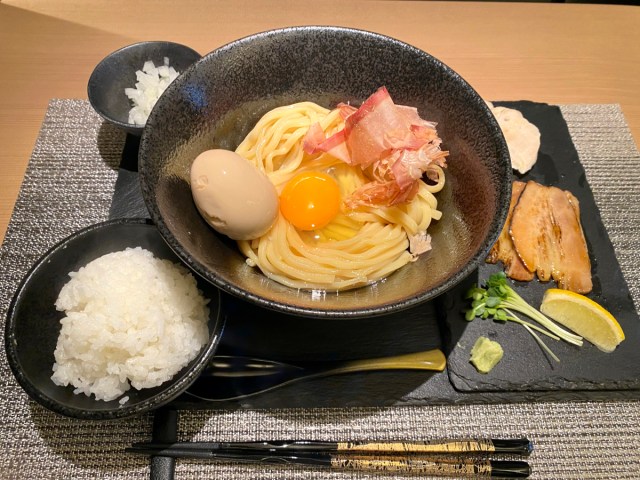
He mixed the main dish until it was nicely blended and then slurped up a bite. The noodles were good! The kaeshi, or light blend of soy sauce, sugar, and mirin coating the noodles originally, wasn’t as strong as he had predicted, and he could taste the egg first and foremost. Apart from the different texture of the noodles, it didn’t actually taste far off from TKG at all.
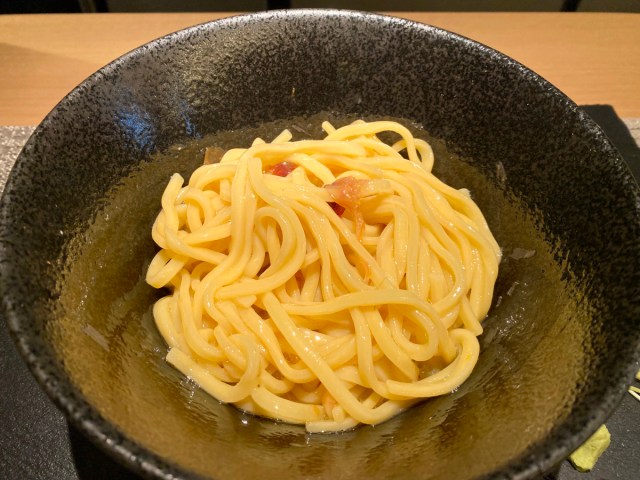
While you can find chilled or hot noodles in TKM, Fujii uses chilled noodles, and the quality of the noodles themselves also came through to P.K. He supposed that such a dish consisting of relatively simple ingredients needed each one to really be at the top of its game.
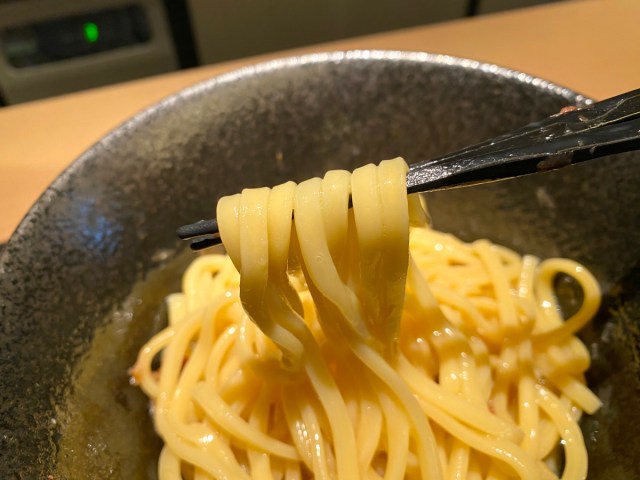
He then experimented by adding some seasonings to the mix such as onion, wasabi, and lemon. Out of those, the wasabi seemed to have the most incredible compatibility with the TKM. The grilled chashu pork on the side was also mouth-wateringly delicious.
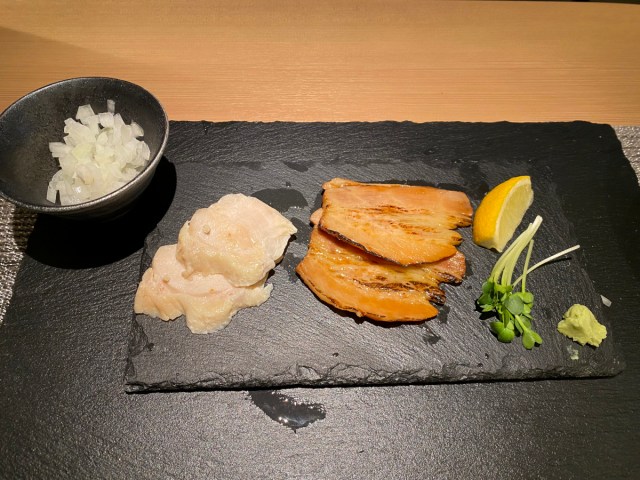
Once all of his noodles were gone, P.K. dumped the small bowl of rice into the main dish to soak up the last remaining bit of the egg mixture. It was perfection. He thought it was funny to think that his meal had started as TKM but actually finished as TKG. The transition from one to the other was flawless.
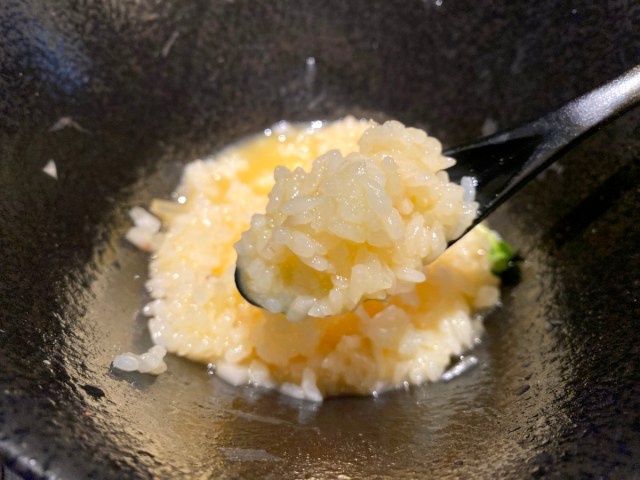
All in all, it was a truly delicious meal, and P.K. would absolutely go back again for more TKM. While its simplistic nature didn’t result in any kind of overwhelmingly powerful taste, he thought it was perfect for those times when you might want a relatively light meal. In fact, he thought it might be an excellent way to fill your stomach after a bit of drinking at night. He hopes more restaurants and izakaya begin offering TKM on their menus as standard practice once the word spreads.
This experience also left P.K. wondering: What will be the next popular variation of TKG? How about tamago kake pan (TKP), or egg over bread? In any case, we love experimenting with fresh takes on various dishes, so you can bet we’ll be there whenever the next new TKG-inspired restaurant opens.
Restaurant information
Fujii / 二二一(ふじい)
Address: Tokyo-to, Chiyoda-ku, Kanda Jimbocho 2-2-38
東京都千代田区神田神保町2-2-38
Open 11 a.m.-3 p.m., 6 p.m.-1o p.m.
Photos © SoraNews24
● Want to hear about SoraNews24’s latest articles as soon as they’re published? Follow us on Facebook and Twitter!
Credit:

0 comments: